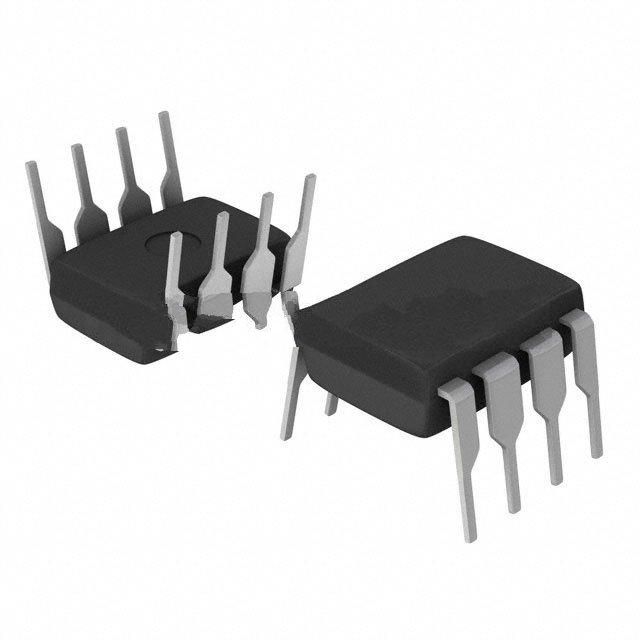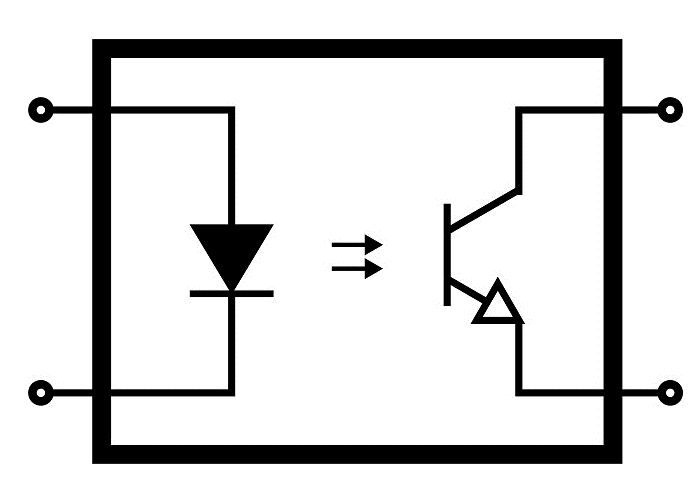What Are Optoisolators and How Do They Work?

What Are Optoisolators?
Optoisolators, also known as optical isolators or optocouplers. An optical isolator is a passive optical device that only allows one-way light to pass through, and its working principle is based on the non-reciprocity of Faraday rotation. Light reflected by fiber echoes can be well isolated by optical isolators. Optical isolators mainly use the Faraday effect of magneto-optical crystals. The characteristics of the optical isolator are: low forward insertion loss, high reverse isolation, and high return loss. The optical isolator is a passive device that allows light to pass in one direction and prevents it from passing in the opposite direction. Its function is to limit the direction of light so that light can only be transmitted in a single direction. The light reflected by the optical fiber echo can be well isolated by the optical isolator to improve the transmission efficiency of light waves.

How Does An Optoisolator Work?
Optical isolators primarily utilize the Faraday effect of magneto-optical crystals. The Faraday effect, first observed by Faraday in 1845, refers to the phenomenon where materials that do not exhibit optical rotation cause the polarization direction of light passing through them to rotate under the influence of a magnetic field. This is also known as the magneto-optical rotation effect. The rotation angle (θ) of the polarization direction of polarized light transmitted along the direction of the magnetic field is proportional to the product of the magnetic field strength (B) and the length (L) of the material.
For a forward-incident signal light, it becomes linearly polarized after passing through a polarizer. The Faraday magneto-optical medium, together with the external magnetic field, rotates the polarization direction of the signal light by 45 degrees to the right, allowing it to pass through the analyzer, which is placed at a 45-degree angle to the polarizer, with minimal loss. For reverse light, the linearly polarized light exiting the analyzer undergoes a 45-degree rightward rotation when passing through the magneto-optical medium, causing the polarization direction of the reverse light to become orthogonal to the polarizer, completely blocking the transmission of reflected light.

In the wavelength range of 1 μm to 2 μm, yttrium iron garnet (YIG) single crystals, which have low optical loss, are commonly used as the Faraday magneto-optical medium. New types of optical isolators with fiber-optic input and output exhibit excellent performance, with minimum insertion losses of approximately 0.5 dB, isolation levels of 35–60 dB, and even reaching as high as 70 dB.
Typical Circuit Diagram of Optical Isolators

Types of Optoisolators
Optical isolators mainly include types such as bulk optical isolators, all-fiber optical isolators, integrated optical waveguide isolators, and polarization-independent optical isolators. These types of optical isolators each have specific characteristics to meet different application needs.
Bulk Optical Isolators are a traditional type of optical isolator that achieve unidirectional light transmission through the Faraday effect of magneto-optical crystals. This type of isolator has a relatively simple structure and is suitable for many scenarios requiring optical isolation.
All-Fiber Optical Isolators utilize fiber optic technology to integrate light transmission and isolation within the fiber, offering higher transmission efficiency and a smaller size. These isolators are well-suited for high-speed and high-power optical communication systems.
Integrated Optical Waveguide Isolators use integrated optical technology to integrate light transmission and isolation onto a chip, providing a higher level of integration and better performance.
Polarization-Independent Optical Isolators are unaffected by the polarization state of light, maintaining good isolation across different polarization states.
What Is the Function of the Optoisolator?
The primary function of an optoisolator is to provide electrical isolation while transmitting signals from one part of a system to another. It serves to protect low-voltage components by keeping them electrically insulated from high-voltage sections. This insulation prevents voltage spikes and electrical noise from affecting the system's performance or causing damage. In addition, optoisolators ensure that the signal transferred is clean, reliable, and free from unwanted interference.
What Is the Difference Between Optocoupler and Optoisolator?
Although the terms optocoupler and optoisolator are often used interchangeably, there are subtle differences between the two. Optocouplers focus more on coupling or connecting two separate circuits through light-based signaling. Optoisolators, on the other hand, emphasize the isolation aspect—ensuring complete separation of input and output circuits to prevent the passage of unwanted electrical signals. Optoisolators are typically used in applications where isolation is more critical, whereas optocouplers may be used in environments where the primary concern is signal transmission.
What Are the Advantages of Optoisolators?
One of the main advantages of optical isolators is the electrical isolation between the input and output circuits, which makes them very useful in any situation where signals need to be passed between two circuits that are isolated from each other. This characteristic of electrical isolation helps to prevent interference and damage that may be caused by direct electrical connections between circuits.
Another important advantage of optical isolators is that they can effectively prevent power interference situations and protect the internal circuit. This is especially important in cases where the input and output power supply voltages are inconsistent. By using an optical isolator, you can avoid the impact of power interference on the device and protect the circuit from damage.
In laser applications, optical isolators are used to prevent unwanted feedback from entering the laser source, which is essential to maintain the coherence of the laser, while also protecting the laser from potential damage. This capability helps to improve the stable operation of the semiconductor laser tube, as the feedback can produce frequency noise, offset, amplitude fluctuation or mode skip, and the optical isolator can eliminate these adverse effects.
In addition, optical isolators are also used in optical fiber communication systems, optical information processing systems, optical fiber sensing systems, and precision optical measurement systems to reduce the adverse effects of backward transmission light on the light source and system. For example, in high-speed direct modulation and direct detection fiber optic communication systems, backward transmission of light can generate additional noise and reduce system performance. By using an optical isolator, this adverse effect can be eliminated and the stability and performance of the system can be improved.
How to Test a 6-Pin Optoisolator?
Testing a 6-pin optoisolator involves checking both the LED and the phototransistor inside the device to ensure proper functionality. Here’s a step-by-step guide to performing the test:
1. Identify the Pins
The 6-pin optoisolator typically has two pins dedicated to the LED (input side) and four pins for the phototransistor (output side). Refer to the datasheet to accurately identify the anode and cathode of the LED and the collector, emitter, and base of the phototransistor.
2. Test the LED Side
Set your multimeter to the diode test mode. Place the positive probe on the anode (LED pin) and the negative probe on the cathode. The multimeter should show a forward voltage drop (around 1.2V), indicating the LED is working properly. If no reading is shown, the LED might be damaged.
3. Apply Voltage to the LED
To activate the LED, apply a small DC voltage (1.2V to 1.5V) across the LED pins using a power supply or battery, including a current-limiting resistor (typically 330Ω to 1kΩ) to prevent excessive current.
4. Test the Phototransistor Side
With the LED activated, set the multimeter to resistance mode (ohms). Place the probes across the collector and emitter of the phototransistor. A significant drop in resistance should occur when the LED is on, indicating that the phototransistor is conducting. The reading should show high resistance when the LED is off, confirming the isolation between input and output.
5. Check for Isolation
Lastly, ensure there is no direct electrical continuity between the input and output sides using the continuity test function of the multimeter. The lack of continuity confirms that the optoisolator is providing the necessary electrical isolation.
How to Use A4N33 Optoisolator to Drive a Relay?
Using an A4N33 optoisolator to drive a relay involves interfacing the optoisolator with both a control circuit and the relay. Here’s a detailed guide:
1. Connect the Input Side (LED)
Connect the anode of the A4N33’s LED to the control signal output (e.g., a microcontroller pin) through a current-limiting resistor. The resistor value typically ranges from 330Ω to 1kΩ, depending on the control voltage and the required forward current for the LED, usually around 10-20mA. The cathode of the LED should be connected to the ground of the control circuit.
2. Control the LED
When the control signal is applied, the LED inside the optoisolator lights up, which in turn activates the phototransistor on the output side. Ensure the control signal is properly timed to synchronize with the desired operation of the relay.
3. Connect the Output Side (Phototransistor)
Connect the collector of the A4N33’s phototransistor to the positive terminal of the relay coil. The emitter should be connected to the ground of the relay circuit. The other end of the relay coil connects to the positive supply voltage of the relay circuit, which is often higher than the control circuit voltage.
4. Include a Flyback Diode
Place a flyback diode (e.g., 1N4007) across the relay coil, with the cathode connected to the positive terminal. This diode suppresses voltage spikes generated when the relay is de-energized, protecting the phototransistor from damage.
5. Activate the Relay
When the input LED is on, the phototransistor conducts, allowing current to flow through the relay coil, thus energizing the relay and closing the contacts. Adjust the control signal timing as needed for precise control over the relay.
6. Verify Proper Operation
The final step is test the circuit to ensure the relay operates correctly in response to the input signal. Check that the relay activates and deactivates smoothly without excessive delays or noise, ensuring reliable operation!
What Is the Application of Optoisolators?
Optoisolators find their way into numerous applications across various industries:
- Power electronics
- Microcontroller systems
- Medical devices
- Telecommunications
- Data acquisition systems
- High precision testing machine
- Electric control system
- Automotives
Statement
All articles (images, texts, audio) on this site are uploaded and shared by users, or integrated from relevant internet sources, only for user's learning. If your rights are violated, please contact the administrator to delete! Link to this article: https://www.jinftry.com
SIT1602AC-72-33E-74-176000G│ SIT1602BC-13-18N-18-432000E│ SIT1602BC-23-XXS-14-000000E│ SIT1602BC-32-33N-40-000000Y│ SIT1602BC-71-XXN-25-000625G│ SIT1602BC-72-33E-25-000000E│ SIT1602BC-73-18S-62-500000G│ SIT1602BC-73-30N-74-250000D│ SIT1602BC-82-25N-28-636300T│ SIT1602BC-83-25E-14-000000Y│ SIT1602BC-83-XXE-75-000000Y│ SIT1602BI-11-18N-18-432000D│ SIT1602BI-13-28S-25-000625E│ SIT1602BI-22-XXS-10-000000G│ SIT1602BI-31-25E-10-000000X│ SIT1602BI-31-25S-33-000000Y│ SIT1602BI-31-33E-7-372800T│ SIT1602BI-32-33N-26-000000Y│ SIT1602BI-81-30N-28-636300Y│ SIT1618AE-13-33E-20-000000E│ SIT8208AC-33-28S-35-840000X│ SIT8208AC-8F-18S-54-000000X│ SIT8208AC-G3-33E-6-000000X│ SIT8208AI-2F-18E-38-400000X│ SIT8208AI-33-18S-40-000000T│ SIT8208AI-83-25E-40-500000Y│ SIT8208AI-GF-25E-48-000000X│ SIT8209AC-81-28E-156-257812X│ SIT8209AC-83-33E-98-304000Y│ SIT8209AI-G1-18E-156-250000X│ SIT8209AI-G1-33E-133-333300X│ SIT9120AC-1B2-33E166-666660E│ SIT9120AC-1C2-25S148-500000Y│ SIT9120AC-1C3-33S25-000000T│ SIT9120AC-2CF-33E74-250000Y│ SIT9120AC-2D3-33S125-000000T│ SIT9120AI-1B2-XXS133-333000D│ SIT9120AI-1BF-25S133-333330E│ SLR1TTE1472D│ SLWSTK6241A│ SMCJ54A_24│ SML-LXL8047SYCTR-2│ SMM02040C6209DB300│ SMM02040D2491BB300│ SN65HVD230DG4│ SN74AHC1G00DBVRE4│ SN74AS253ADE4│ SN74HCT138DRG4│ SPB80N06S2-08│ SPHCW1HDN945YHR3KG│ SPMWH3228FD5WAP0S4│ SQ48T15012-NDB0│ SSM-112-L-DH│ SSM2250RMZ-REEL│ SST39VF040-70-4I-WHE-T│ STK681-332-E│ SWM30-15-NV-P5│ SY89809ALTZ│ SZP6SMB24AT3G│ T320F08GC│ T37008-12-0│ T491A475M010AS│ T491C226M010AT4280│ T525D477M2R5ATE025│ T540D687M2R5DH8605WAFL│ T541X107M025DH8710│ T55B107M004C0035│ TA-12-288MCE-T│ TA33-8K87F2K│ TAP335M016BRS│ TB-40-000MBD-T│ TC164-FR-07619KL│ TE0803-04-4DE21-L│ TE200B39RJ│ TFC-125-02-L-D-A-K-TR│ TFF11152HN-N1-111│ THS4225DGNRG4│ THS4304DBVTG4│ TIPL760C-S│ TJ2431530000G│ TLC271ID│ TLP3450-TP-F│ TLP383-D4BLLTL-E│ TLV342IDR│ TLV7041DBVR│ TM5RE3-44-20│ TMM-118-01-S-S-SM│ TMS320DM642GNZ500│ TNPU06032K20BZEN00│ TNPW06031K80FEEA│ TNPW060328K4FEEA│ TNPW0603301RFEEA│ TNPW080516R2BETA│ TNPW0805210KBEEA│ TP3-470-R│ TRR03EZPF4021│ TS184F23IET│ TS3004ITD1033T│ TS924IN│ TSW-113-07-T-S│ TT500N18KOF│ TUW3J15RE│ TV06DT-15-19SC-LC│ TV07DZ-13-4SD-LC│ TV07DZ-17-35JB-LC│ TVP00DZ-23-35HA│ TVP00RK-25-187PC-P35│ TVPS00RF-25-7PD-LC│ TVS06RK-21-11HE-LC│ TVS06RS-19-35PC-LC│ TVS07RF-17-26JD-LC│ TX40AC90-1407│ TXD2SA-L-6V-4│ TXR40SJ00-1208BI│ U11J62CME22│ U23J37ZGE22│ UBW1H331MHD│ UEP1H3R3MDD1TD│ UMZ33KFHTL│ UPGH33-2838-6│ UPW2A331MHD1TN│ USUG1000-503J│ V18ZA05P│ V23050-A1012-A542│ V23061B1002A401│ V24B3V3H100BN3│ V24B8M200BN2│ V300B2C100A3│ V375B2H100AL│ V48A8T400B2│ V51031500000G│ V715A2510000G│ V72A28E400B2│ VA0301600000G│ VBO40-16NO6│ VE-2N3-MY│ VE-2TJ-EV│ VE-BNM-CY-B1│ VE-BW3-EW-S│ VE-J2H-IX│ VE-J30-CZ-B1│ VE-J5J-IY-F2│ VF3871500000G│ VFC375C5C100A│ VI-23F-MV-F4│ VI-23J-EW-B1│ VI-274-EW-F2│ VI-2T1-MY-S│ VI-2W2-CX-F4│ VI-B5B-CW-F1│ VI-B5B-MW-B1│ VI-BWD-CV-S│ VI-J0B-IZ-F4│ VI-J1R-CX-F3│ VI-J4K-CZ-F4│ VI-JNL-CY│ VI-JNL-MZ-F3│ VI-JV1-IY│ VJ0402D560JXXAJ│ VJ0603A6R8CXAAC│ VJ0603D3R6CLBAP│ VJ0805A330FXBPW1BC│ VJ0805D180FLAAJ│ VJ0805D330MXBAP│ VJ0805Y102MXACW1BC│ VJ1206A6R8CXEMC│ VJ1206Y222KXJCW1BC│ VSKE71-14P│ WP63GD│ WSL25125L000FEB│ X9401WV24-2-7_157│ XBHAWT-02-0000-0000T40F4│ XC6121A225ER-G│ XC6121E542ER-G│ XC6123C625MR-G│ XC6135C23D9R-G│ XC6210A482MR-G│ XC6222C281PR-G│ XC6501A161NR-G│ XC6501D23ANR-G│ XC6505A421ER-G│ XC6805B2E18R-G│ XC9257A32EER-G│ XPN9R614MC-L1XHQ│ XQ6VLX550T-L1RF1759I│ XTEAWT-00-0000-00000HGE2│ Y0006V0494QT9L│ Y000714K9250T9L│ Y0024157R330B0L│ Y07891K00000C0L│ Y112150R0000T0L│ Y1756800K000V0L│ YC158TJR-0724KL│ YC162-FR-071K58L│ YK4461903000G│ ZGP323LAS2804C│ ZTX558STOB







